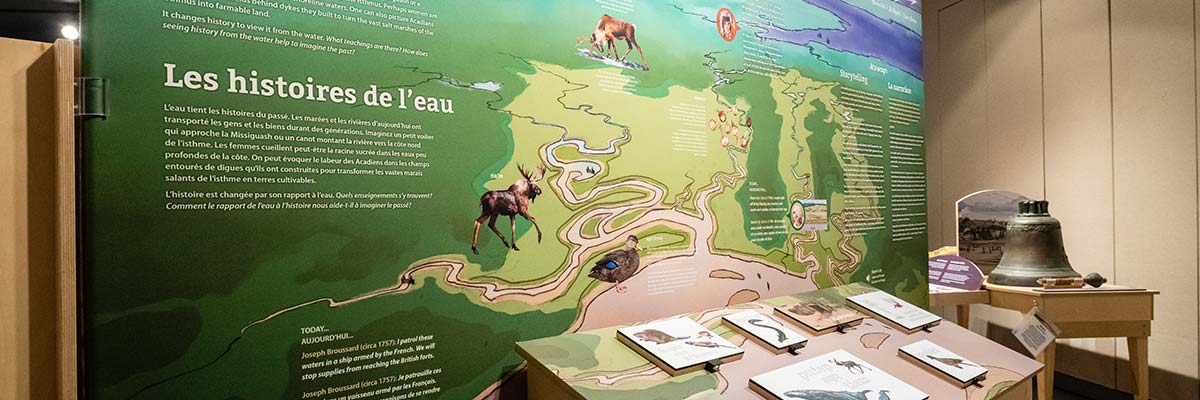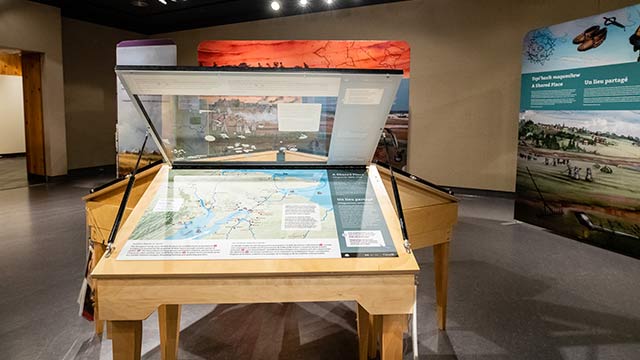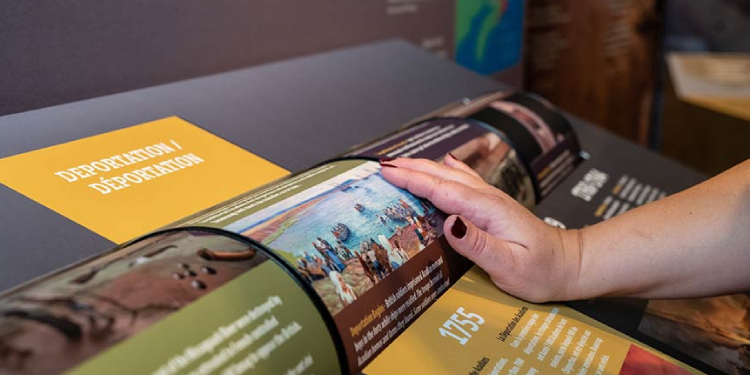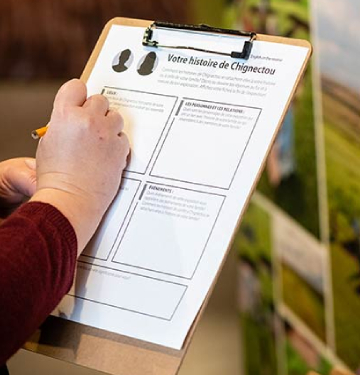
Revealing Chignecto: The travelling exhibit
Parks Canada’s travelling exhibit, Revealing Chignecto: The Stories Within, brings the region's long history to life from the perspectives of Mi’kmaq and Acadian peoples, inviting visitors to question old narratives and reveal new truths.
A story divided
The Chignecto Isthmus is the land bridge that connects New Brunswick to mainland Nova Scotia. It is a region with a history stretching back thousands of years. Its historical significance is reflected by the fact that it is home to 5 national historic sites:
- Fort Beauséjour-Fort Cumberland
- Beaubassin
- Fort Lawrence
- Tonge’s Island (Île de la Vallière)
- Fort Gaspareaux
Until recently, interpretive tours and exhibits about Chignecto focused on its role as an 18th century battleground, where French and British imperial forces fought for control of North America. But long before Europeans arrived in Chignecto, Mi’kmaq communities lived and traded there. And beginning in the seventeenth century hundreds of Acadians settled in the region. Both groups prospered in Chignecto and established important social ties. Together they maintained a peaceful coexistence until a French-British conflict in the 1750s brought the communities to crisis. Those imperial conflicts resulted in the displacement of the Mi’kmaq and deportation of the Acadians.

"Chignecto" is a European adaptation of the Mi’kmaw term for a much larger region, Siknikt or Sikniktuk, meaning “the drainage place”. It encompasses land in both New Brunswick and Nova Scotia. The drawing of colonial borders separated an area seen as one place by Mi’kmaq people for millennia.
These borders split up historical and archaeological collections between the provinces, making it a challenge to tell a complete story of its past.
Coming together
In 2017, Parks Canada staff developed a travelling exhibit based on Mi’kmaq and Acadian perspectives. New research by Parks Canada staff and Indigenous partner organizations explored the history of Mi’kmaq and Acadian communities at Chignecto, as well as their response to imperial conflict.
A more inclusive approach to history presentation
Archaeology revealed how traditional Indigenous knowledge and land use interacted with colonial settlements and land use. Objects used for hunting and food processing, trade goods and cultural practices demonstrated the importance of the region for cultural interaction, trade, and habitation over millennia. Artifacts from different eras also demonstrate a pattern of Indigenous sites from long prior to European arrival and after. Analysis of multiple sites, and objects found at them, showed that those sites coincided with the arrangements of Acadian villages founded later. Maps on display in the exhibit chronicle those changes over time.

The Mi’kmawey Debert Cultural Centre of the Confederacy of Mainland Mi’kmaq, in Nova Scotia, and Mi’gmawe’l Tplu’taqnn Inc. in New Brunswick contributed research and participated in collaborative content development.
The exhibit also showcases Mi’kmaq and Acadian attempts to maintain their communities and way of life amidst imperial conflict. Both groups coexisted in the space and had social ties. Together they created an independent region that lasted until the French-British conflict in the 1750s brought the communities to crisis.
Revealing Chignecto presents engaging themes of ancestral landscapes, the environment, shared spaces, and conflict. Acadian artist Réjean Roy created original art for the exhibit that shows the region’s role as both a contested and shared place. Visitors can explore the land and people of Chignecto through oral history, archeology, maps, and written records. The exhibit also has audio in English, French, and Mi’kmaq.


Through multiple perspectives, visitors are encouraged to question old narratives and to reflect on their connection to the ongoing story of Chignecto.
- Date modified :

